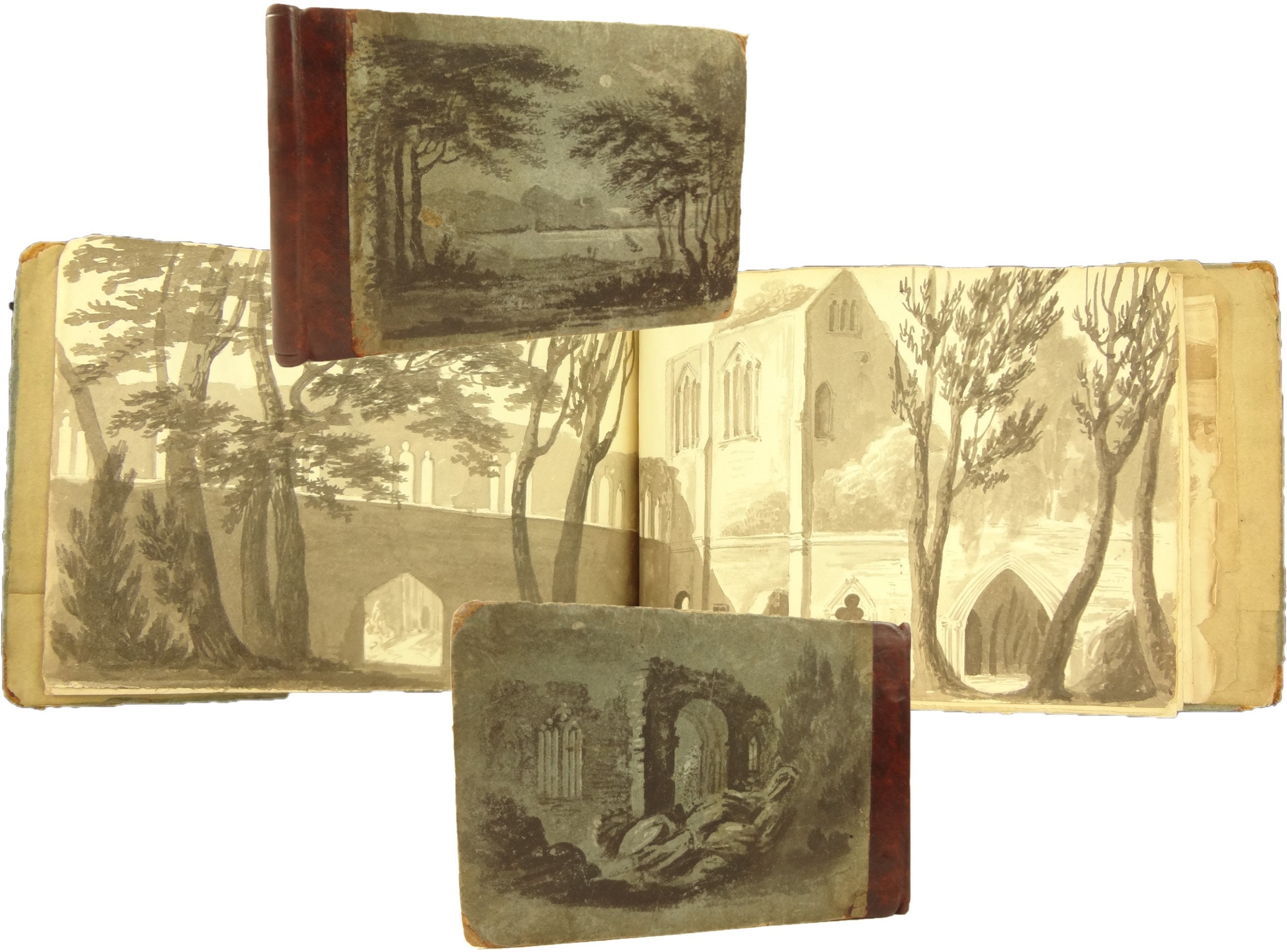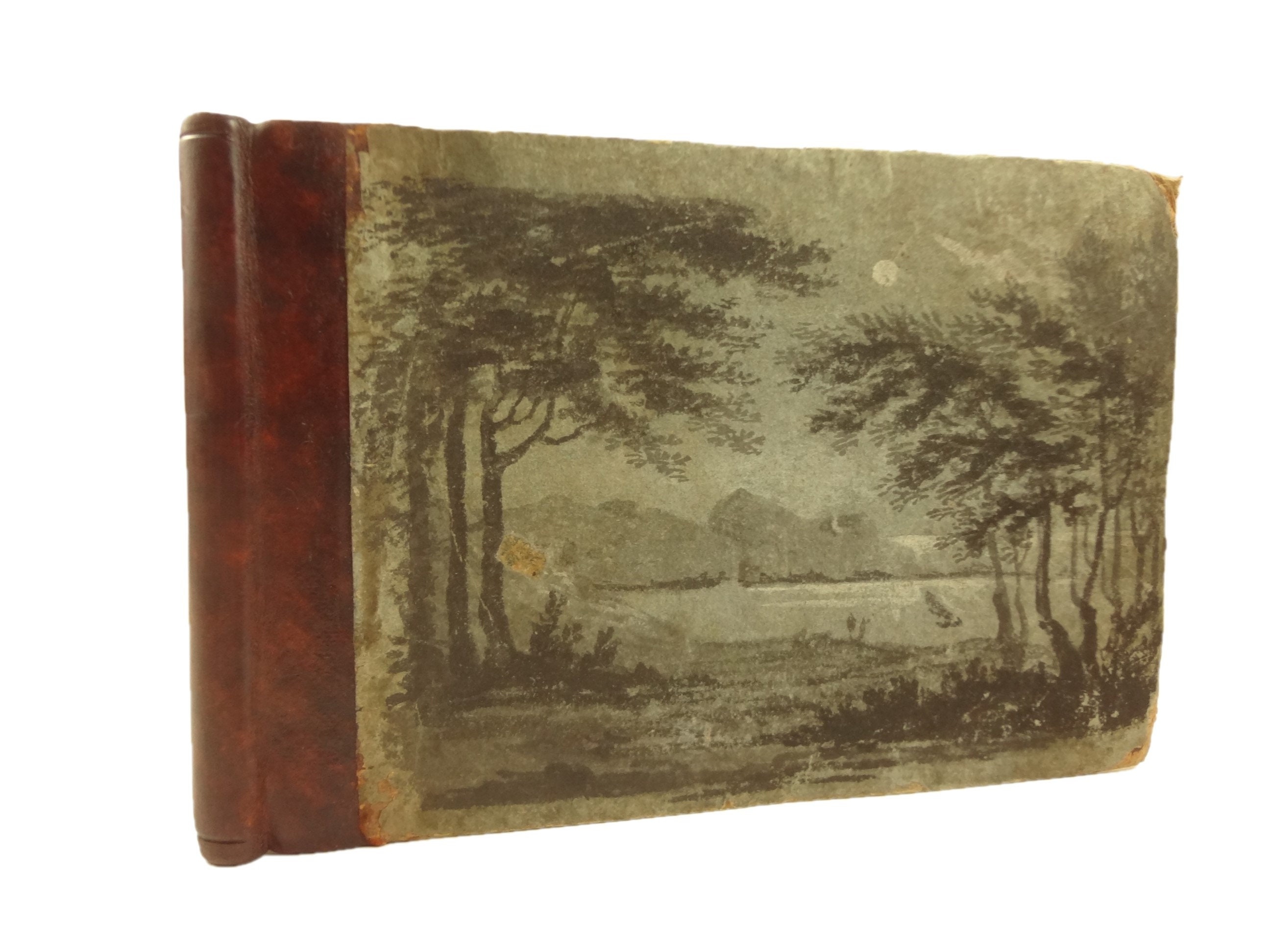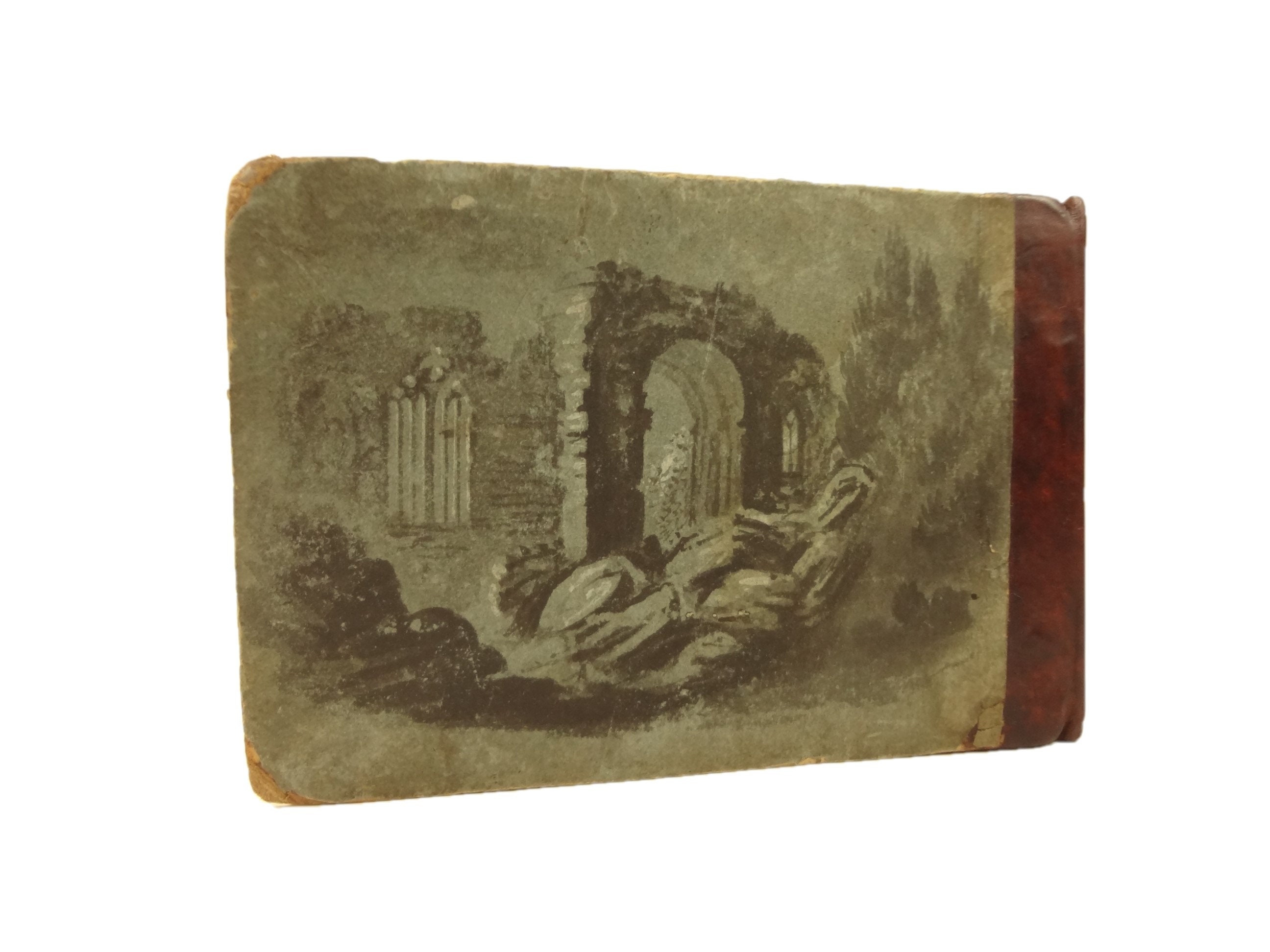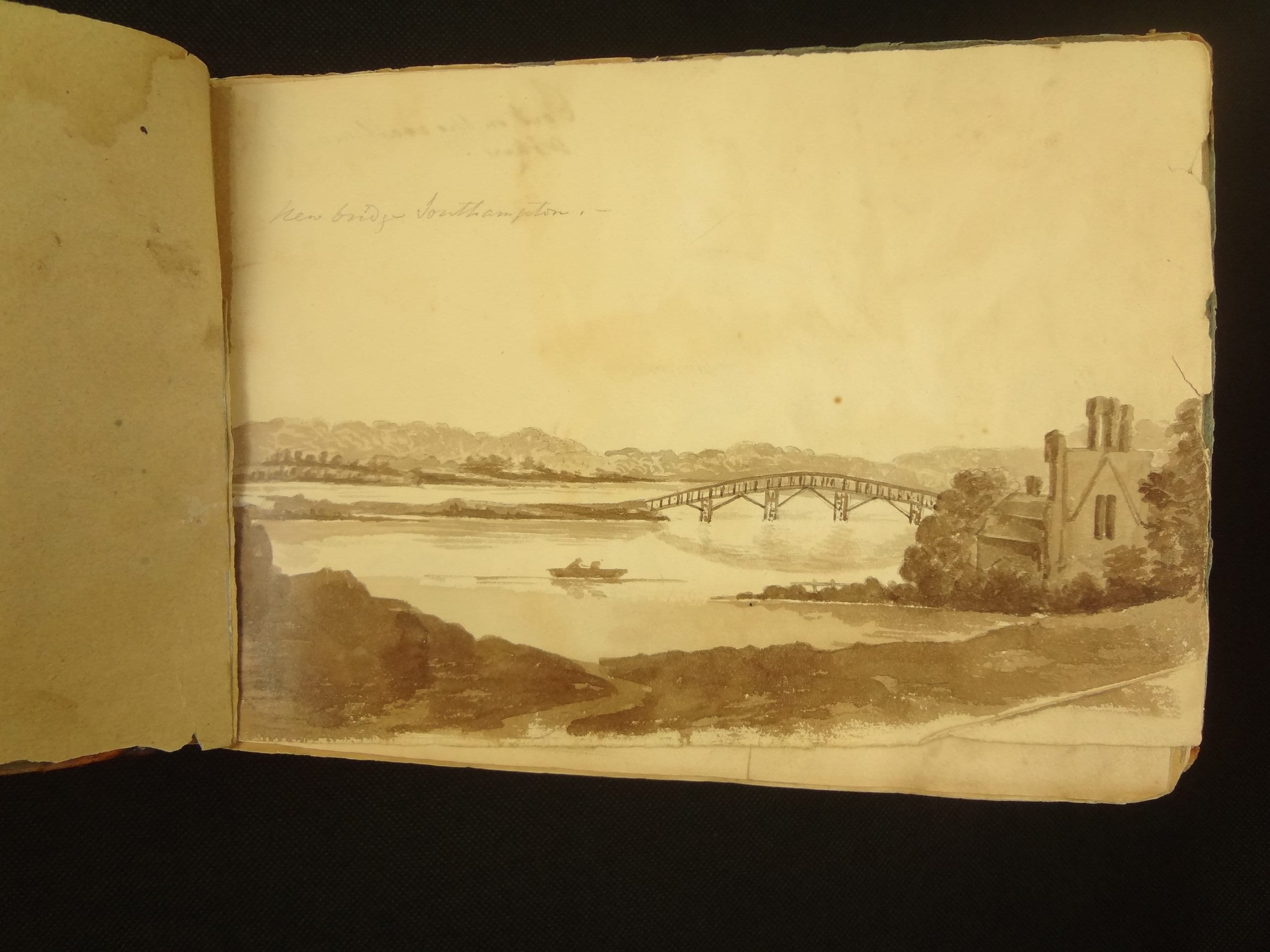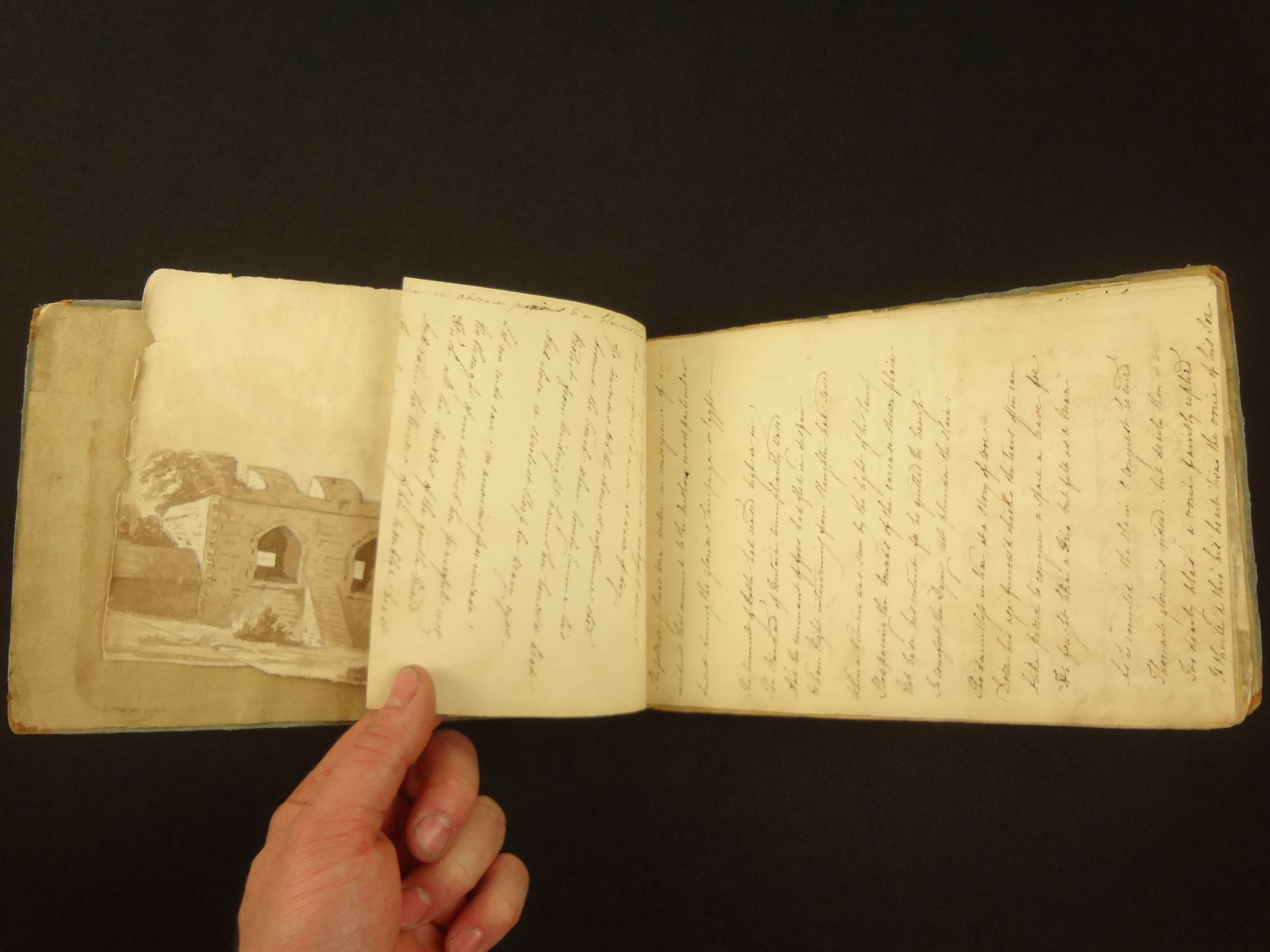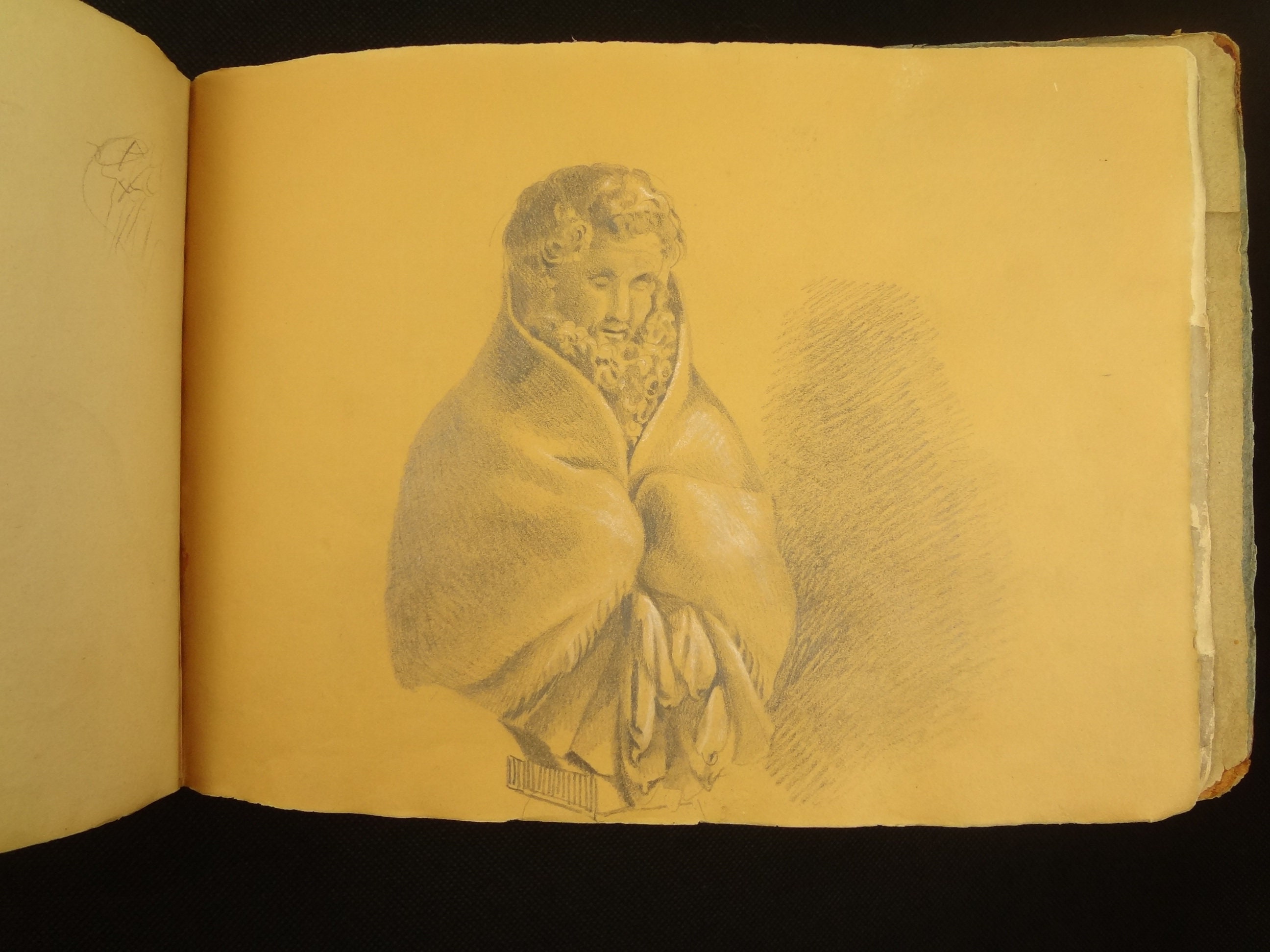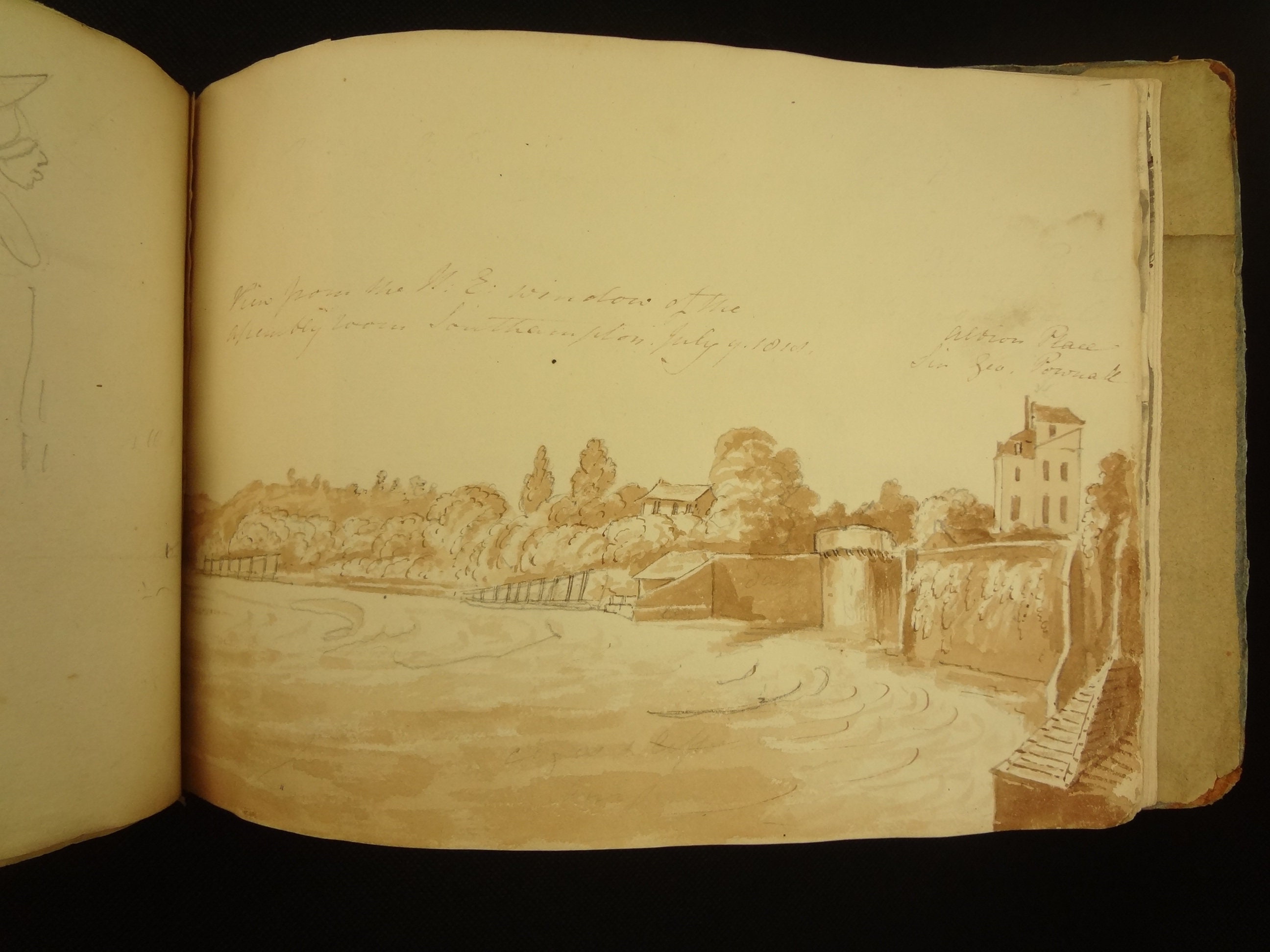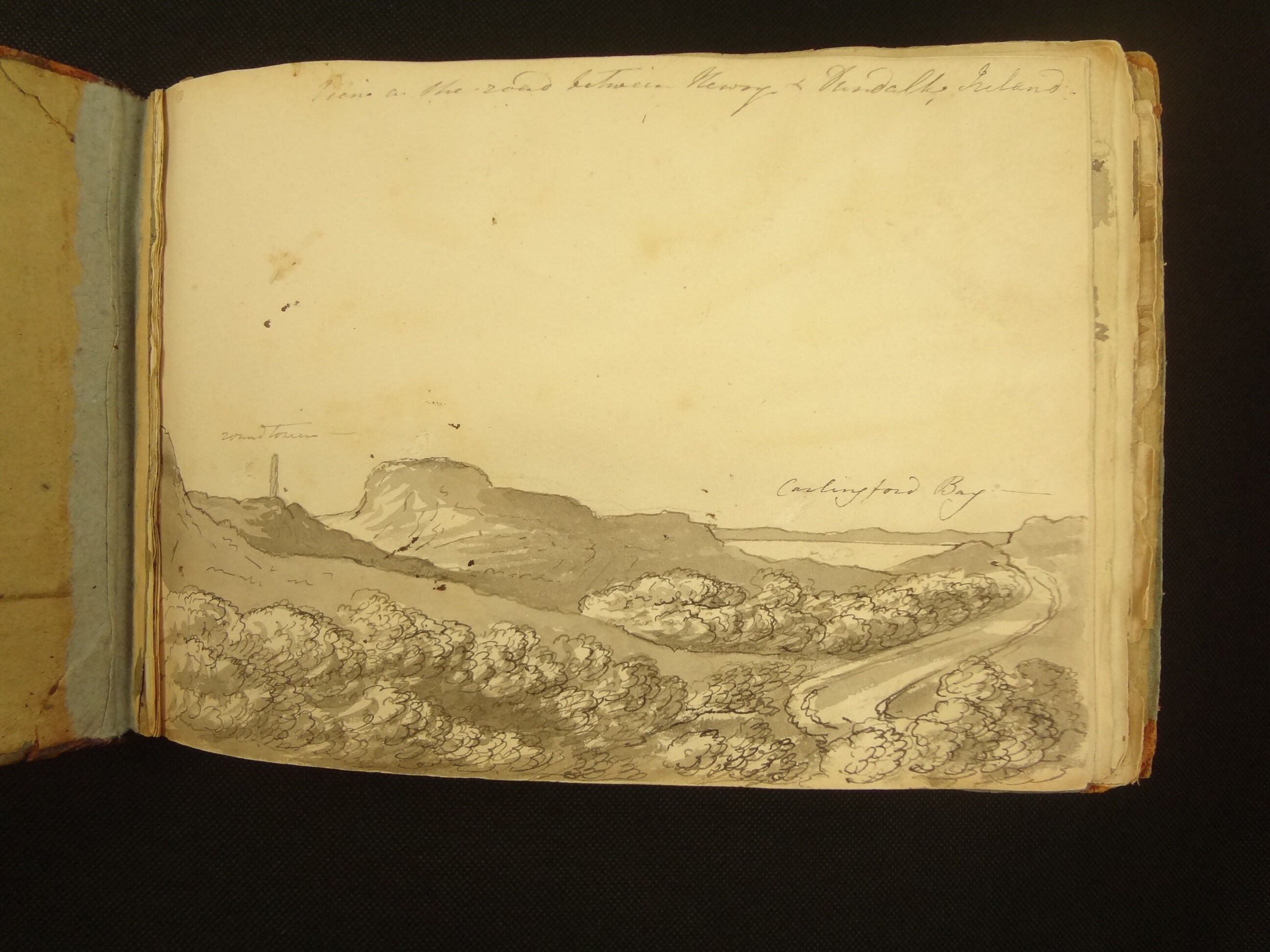circa 1810 Artist's Sketch Book. Also, original of a published poem. Southampton, Netley Abbey, Ireland, etc.. Ink wash and line drawings.
$699.99
A handsome artist's sketch book, mainly with ink washes from the Southampton area (including many of Netley Abbey) but also with an original manuscript of a poem that found its way to publication later in the 19th century, The Dying Soldier (author anonymous), with some explanation of the poem's origins.
The book includes:
Two hardcovers with artist's ink washes.
"New Bridge from Southampton" - full page ink wash
"Fort on the Road Near Netley Abbey" - full page ink wash
1/2 page fragment of poem
Original manuscript of a poem that would later, in print, be called The Dying Soldier; with an explanation, "The following lines were written in consequence of an incident that occurred to the author's most particular friend during the glorious campaign in Egypt." G. (possibly Pownall) signed his name to the end of the poem.
This anonymous poem was printed in:
1864 The Patriotic Speaker, Consisting of Specimens of Modern Eloquence... p. 364
1857 The Modern Reader and Speaker, A selection of poetry and prose... p. 306
1878 Fugitive Poetry 1600-1878, p. 556
Several other excerpts of poetry including one attributed to Spencer, and one by Dr Henry Harington. Together, with The Dying Soldier, two leaves of poetry.
Leaf with an ink wash of an ancient wall, and a window. No title.
Full-page ink wash "Caversham Well"; on verso line drawing of woman holding baby.
Full-page graphite sketch of tall church spire.
Small graphite portrait of bust. Following leaf with full-oage graphite (black and white) sketch of same bust.
Full-page ink wash of a church.
Full-page ink wash of Netley Abbey.
Two-page ink wash of Netley Abbey (verso of one page, recto of following); upside down in the book.
Full-page wash Lodger at Caversham
Full-page wash, presumably Netley Abbey
Woman filing nails in front of town walls line drawing, full-page
Full-page ink wash of the water and walls of Southampton dated July 181(?); this plate has "Albion Place, Sir Geo. Pownall"
Another wash of church ruin, 1/2 page.
And another church wall wash, full page.
Pencil sketch of a woman addressing a courier riding away on a horse.
Full-page wash of lean-to, and two people, in front of a church ruin.
Full-page wash of Belfast Loch (upside down in binding)
Full-page wash of Copeland Island (upside down in binding)
Full-page wash of "road between (Newry?) and Dundalk, Ireland", with Carlingford Bay in the background.
Jane Austen Tie -
Around this same time Jane Austen stayed in Southampton several times. What later became the novel Northanger Abbey is largely thought to have been influenced by Austen's visits to Netley Abbey, while in Southampton; it was originally sold to a Southampton High Street publisher under the title Susan, but she bought it back and changed the title. See "Jane Austen, Netley Abbey, and Gothic Tourism", by Cheryl Butler, for a lengthy and interesting discussion.
Attribution -
Because the leaf of Southampton says "Sir George Pownall", and The Fallen Soldier is signed "G. (?)" someone has attributed (on the pastedown) the book to Sir George Pownall, a Canadian Legislative Council member. I find this attribution... far-reaching. The "Sir George Pownall" might simply be indicating he was staying in Southampton at the time of the sketch.
Also, the Sir George Pownall might also be referring to General Sir George Pownall Adams, who commanded in Egypt and Ireland. I find no reference of the Canadian Pownall in Egypt or Ireland.
I'm disinclined to attribute the work to either. There are a number of notes and numbers within the illustrations, perhaps indicating they were to later be engraved for publishing. I wonder if the book wasn't the work of an artist who provided drawings to be engraved for printing. The Pownall reference might simply be indicating where he was staying in Southampton.
Dating the Book -
The paper has the watermark "Whatman" with dates, the last leaf has a clear 1801. The Southampton leaf has a date from circa 1810.
About the Art -
This book is a prime example of a traveler's sketch book circa 1800. Ink washes were much in style and museums hold many similar examples from the period (search "ink wash grand tour museum"). Also, the darkened leaf with a black and white graphite drawing of a bust is similar to a style popular in Europe at the time.
Physical Attributes -
Measures approx. 23.5 x 16 x .75 cm. Pasteboard boards, with a leather spine; board covered with ink-wash drawings. See earlier list of art. Paper watermarked Whatman.
Condition -
Please review the pictures. Nicely re-spined. Boards with edge and corner wear. Flyleaf (extension of the pastedown) repaired at gutter, but still some gutter cracking; also with a (tea?) mark. Sir George Pownall info written on the pastedown, and a sketch of feet lightly visible on flyleaf. Papers throughout with some toning, page edge chipping, etc. as befits a sketch book used in the field. Notes and annotations throughout. Some evidence of removed leaves at gutter (stubs). Also, several leaves seemed to have been cut with a wider stub. Many of the illustrations with guide words/numbers, presumably for later publication/engraving. Evidence of removal of leaves at rear. No rear flyleaf.
Shipping from United States
Processing time
1-3 business days
Customs and import taxes
Buyers are responsible for any customs and import taxes that may apply. I'm not responsible for delays due to customs.
Payment Options
Returns & Exchanges
I gladly accept returns
Just contact me within: 7 days of delivery
Ship items back to me within: 14 days of delivery
I don't accept exchanges or cancellations
But please contact me if you have any problems with your order.
Conditions of return
Buyers are responsible for return shipping costs. If the item is not returned in its original condition, the buyer is responsible for any loss in value.
Privacy policy
We do not collect any private information. For billing, Etsy provides the service. We only receive notice that payment was made. The shipping address is provided to us by Etsy, based on what they buyer submitted during check-out. We do not store these addresses. That is the extent of the information that we receive during a transaction.
